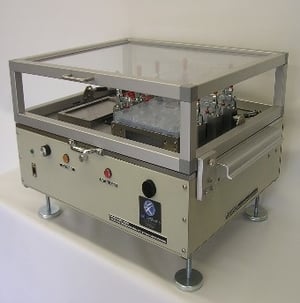+1 (317) 804-2330 | info@ballsystems.com | Blog
+1 (317) 804-2330 | info@ballsystems.com | Blog

As you move through the product development lifecycle of a printed circuit board assembly (PCBA), different stages of functional testing serve essential roles in ensuring quality assurance for your product. As you progress further through the product lifecycle, each failure identified in your PCBA results in an ever-increasing cost to correct. The earlier you can identify failure(s) and failure modes, the less costly it will be to address them. Progressing through the product development lifecycle, you should begin by verifying the design meets the functional intent, followed by a validation cycle where you validate the long-term durability and conformance of the product to the design intent as it was built in a manufacturing environment that approximates your eventual final production process. Finally, in full-scale production, each part should be functionally verified to ensure that each device shipped will satisfy customer requirements for quality and functionality. electronics functional testing in its different forms helps this evaluation and through the product development lifecycle. You’ll see how each provide different functions and data for the test engineer to evaluate. Let’s look at the distinct aspects of each:
Engineer validation and testing (EVT)
During the EVT stage, the functional testing of PCBA ensures it has been designed correctly and meets its functional intent. This helps prevent product that does not comply with requirements from being assembled in subsequent phases of the product development lifecycle, or worse-yet, into the final product and shipped to the end customer. If the initial product design is unable to produce the metrics and results expected, changes will be made to the hardware. In this stage, your PCBA may be tested for logic functions, power, thermal and Electromagnetic interface (EMI) conformance.
Design validation and testing (DVT)
After you’ve validated the performance of the PCBA design, it’s time to validate the design of the product through environmental stresses. This can take multiple forms, Environmental Stress Screening (ESS), Highly Accelerated Life Testing (HALT), Highly Accelerated Stress Screening (HASS), and Highly Accelerated Stress Audit (HASA). Environmental stresses and different conditions are applied to the DUT to see how it reacts. The DVT testing regimen simulates the actual DUT physical environment and sometimes is applied to several DUTs simultaneously. The goal is to determine how long your product can hold up to the limit conditions of its specification profile. Is it ready for production? This stage helps determine the answer.
Through these operating modes and environmental conditions, DVT helps collect key parametric data for the device over a long period of time. Systems used in the DVT stage generally require more interaction from an operator to configure, start, and monitor the test. Once it has started, the system will run until the test cycle has complete or the DUT has failed.
Production Validation and Testing (PVT)
 Once the product is verified and validated as ready for production, manufacturing test systems must be developed. Manufacturing functional testing is not intended to perform design validation or durability testing, but rather to confirm the PCBA was assembled properly and that the combination of various lots and date codes of parts all interact correctly. Unlike an in-circuit test (ICT) though, this type of functional testing is designed to verify the performance of the entire assembly instead of simply testing for individual component or assembly defects. The functional board test for your PCBA should be optimized through a test strategy assessment. By evaluating the overall upstream test coverage at AOI or ICT, you may determine that a test can be pared back or is not required. Likewise, the functional board test will be designed to be time-optimized while providing effective ROI on test time vs. test coverage. Your test partner should have completed a Design for Test (DFT) analysis early in the process to ensure the PCBA design can support the test coverage desired. The later this assessment is completed, the more costly PCBA design changes may become. Finally, your test partner will assist in developing a solution that optimizes cost vs. level of automation, etc.
Once the product is verified and validated as ready for production, manufacturing test systems must be developed. Manufacturing functional testing is not intended to perform design validation or durability testing, but rather to confirm the PCBA was assembled properly and that the combination of various lots and date codes of parts all interact correctly. Unlike an in-circuit test (ICT) though, this type of functional testing is designed to verify the performance of the entire assembly instead of simply testing for individual component or assembly defects. The functional board test for your PCBA should be optimized through a test strategy assessment. By evaluating the overall upstream test coverage at AOI or ICT, you may determine that a test can be pared back or is not required. Likewise, the functional board test will be designed to be time-optimized while providing effective ROI on test time vs. test coverage. Your test partner should have completed a Design for Test (DFT) analysis early in the process to ensure the PCBA design can support the test coverage desired. The later this assessment is completed, the more costly PCBA design changes may become. Finally, your test partner will assist in developing a solution that optimizes cost vs. level of automation, etc.
Ideally you should select a test partner with experience at each stage and which can create solutions for high-volume production. Ball Systems can deliver open-architecture solutions that meet your critical test design requirements while meeting your needs for repeatable, high-precision data collection, and long-term test equipment reliability. If you're considering whether to buy your PCBA functional system or build it in-house, check our guide for determining the best path.

Ball Systems designs, develops, and delivers custom test systems and produces comprehensive build-to-print systems for companies creating or manufacturing critical electronic or electro-mechanical components for automotive, aerospace and defense and consumer appliance applications.
Blog Comments